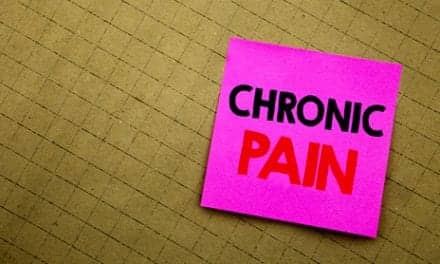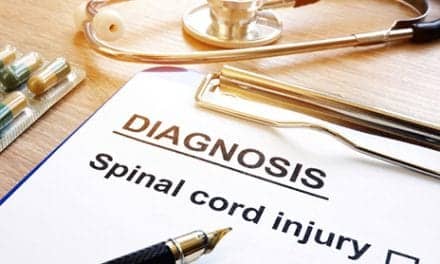According to the National Institutes of Health, pain affects more Americans than diabetes, heart disease, and cancer combined.1 In addition, a survey by the National Center for Health Statistics (2006) revealed that 2% of adults experienced pain lasting more than 24 hours in the prior month, 10% experienced the same pain for a year or more, and chronic pain is the most common cause of long-term disability.2
From assessment and basic treatment, to preventive and rehab maintenance, the “whole” person should be taken into consideration in regard to pain management. This involves a multidisciplinary approach in helping restore patients to their maximum functionality while ensuring that they have little or no pain or that the pain is reduced to a level that is acceptable.
ASSESSMENT
As a physical therapist, certified Polestar Rehabilitation Specialist Pilates instructor, and PMA-certified Pilates instructor, Wendy Price, PT, MS, always asks her patients to rate their pain on a scale of 0 to 10 in addition to considering information she gathers from an evaluation. Price is a training specialist for the STAR (Survivorship, Training, and Rehab) program developed by Oncology Rehab Partners (oncologyrehabpartners.com), and founder of Healthcore Physical Therapy and Pilates Studio in Woodbridge, Conn (healthcorestudio.com).
“I also have pictures of the body so patients can describe their pain better. They illustrate it, and I then ask for a verbal rating scale [onset]—what makes it better, what makes it worse—usually at the end of the session,” she says.
|
Price specializes in outpatient orthopedics and works with many cancer survivors. “With any pain, I like to know exactly where and what type it is,” she explains. “It gives me a good sense of where the patient is coming from.”
Like Price, who uses the 0 to 10 pain scale (0 being no pain and 10 being pain so bad the patient needs to go to the emergency department), Maureen Ziegler, OTR/L, clinical OT at the Rehab Institute of Chicago’s Spine and Sports Rehabilitation Center (www.ric.org/conditions/sportsmed/index.aspx), assesses pain levels primarily by using the Wong-Baker pain scale as well as a functional scale the center created, called the patient specific functional scale. “We ask patients how limited they feel by their pain, again on a scale from 0 to 10, with 0 being unable to perform and 10 being no limitation,” she says. “We always get a history from the patient for onset, duration, aggravating factors, alleviating factors, positions that make it better/worse, and if the pain follows a pattern during the day.”
Ziegler employs a variety of approaches to managing pain depending on patient presentation. The McKenzie assessment is used to measure what kind of pain mechanism they are dealing with. “We look at the primary pain mechanism, which can be inflammatory, ischemic, peripheral neurogenic, central sensitivity, or affective, to determine how to best treat the patient. How the patient is moving and using good posture and body mechanics are the building blocks to managing most musculoskeletal disorders,” she says. “For most of the chronic pain disorders, we advocate movement. Patients spend a lot of time guarding against the pain instead of moving, which is exactly what they don’t need.”
“Pain should be related to function,” says Eva Kuenzig-Roach, MPT, Virginia Baptist Physical Therapy, Cancer Rehabilitation Services, in Lynchburg (www.centralhealth.com/about/virginia.aspx#CC). “Specific symptoms (patient’s complaints of pain or fatigue) can be assessed by a Visual Analog Scale (1-10),” she explains. Pain severity is rated at the present time, its severity on the worst day, and on average. Roach also uses a body diagram for patients to mark where they are having pain. “There is strong emphasis on function because this is how people perceive their quality of life,” she adds. “For example, shoulder pain that results in a loss of range of motion may not be much of a problem in an elderly man who doesn’t lift his arm over his head, but in a younger man who works as a house painter, this impairment can cause significant disability.”
Roach feels that a good history is worth a lot. “There are standard pain questions that we ask: Where is your pain? How long does it last? Can you describe it (throbbing, stabbing, aching, sharp, etc)? When did your pain start? Were there any precipitating factors? Does anything help the pain? Does it get worse at any time of the day? Does your pain keep you awake at night?” She also uses palpation to assess pain. Inflamed tissues can be painful to touch.
NONINVASIVE MANAGEMENT
“If it is inflammatory pain, then the usual rest, ice, and mid-range motion are appropriate,” Ziegler notes.
“I do a lot of hands-on manual therapy,” says Price. “With an exercise-based program,” she says, “I try to have some kind of positive movement experience.” Price likes to have her patients do something active and independently without them hurting in the process. It’s her number one goal. “Studies have shown that if they have a positive experience, it improves disability and psychological scores,” she notes.
A variety of noninvasive modalities to treat pain exist, such as:
Deep heat treatments—for muscle spasms, sprains, strains, and tendinitis; loosen soft tissue contractures; treat chronic arthritis, bursitis, fractures, and inflammation. Can include hot baths, heating pads, heat lamps, or hot moist compresses.
Cold therapy—ice is immediately applied after the injury occurs; relieves pain, reduces internal bleeding and swelling by decreasing blood flow. Ice bags, commercial cold packs, and massaging the painful area with an ice cube are recommended.
E-stim/TENS—transcutaneous electrical nerve stimulation used to reduce pain and promote healing by stimulating the muscles; delivered to surface of skin at variable current strengths and pulse rates/widths. Also see PENS/percutaneous electrical nerve stimulation (uses acupuncture-like needles to deliver current); interferential current therapy (higher frequency wave).
Biofeedback—using electronic sensors to measure stress-responsive body functions while relaxation methods are employed. Data shows which techniques are most effective.
Ultrasound—high-frequency sound waves penetrate muscle tissue, ligaments, and tendons; thermal/continuous transmission or mechanical/pulses.
Therapeutic taping—elastic tape applied over muscles to reduce pain and inflammation, relax overused, tired muscles, and support muscles in movement; nonrestrictive in that it allows for full range of motion.
Iontophoresis—provides high, local concentration of medication to specific injury site unlike oral administration.
Topical biomedicine—natural pain-relieving medicines like capsaicin (found in chili peppers) that stimulate a receptor on nerve endings in the skin, generating the sensation of pain, then desensitizing or adapting to it. Another agent is topical lidocaine patches if pain is close to the skin’s surface, ie, peripheral neuropathy or osteoarthritis.
Low-level lasers—uses gentle beam of infrared light to ease inflammation and promote healing; potentially useful for carpal tunnel syndrome, tendinitis, and arthritic pain.
“These are all examples of modalities that PTs use daily for pain control,” says Roach. “[They include] electrical stimulation such as the units for premodulation and interferential that we use in the clinic, but also the TENS units that patients use at home.” She says moist heat and ice help to decrease inflammation, increase circulation, and reduce muscle spasm. Massage and soft tissue mobilization assist with desensitization as well as muscle relaxation. “Sometimes, as with RSD, we use light compression, which [can] help with a person’s pain by desensitization.” Therapeutic taping can be very effective to improve posture and body symmetry and stimulate muscle contraction.
“Heat and cold are good to teach patients to do independently,” Ziegler advises. “We use biofeedback to help patients with muscle guarding so they understand how their body is working against them. We mostly advocate that patients are taught exercise, posture, or positioning to manage their pain without the use of passive modalities because it gives them the power to make themselves feel better, rather than having a machine or person do it for them.”
Price doesn’t typically use the techniques listed above either, stressing that she wants her patients to progress on to the exercise phase and teaches them how to manage their pain. She delivers a one-on-one hour session with her patients that is all hands-on with what she says are good results. Pilates equipment comes into play, helping with stress reduction and positioning along with the manipulation of gravity. A yoga therapist is also available at her studio where the overall focus is on wellness.
Ziegler doesn’t know of any new modalities being used. “We use modalities very rarely in our clinic because the evidence to support their use is not very compelling. We teach patients to use heat and ice at home,” she says. “I think our philosophy of identifying the pain mechanism is not being used much elsewhere, but it is very helpful to know what kind of pain you are dealing with and can really guide your treatment approach.”
Pilates, yoga, and weight training—exercise and core strengthening are the basic value system of all physical therapists, according to Roach. “It helps to stabilize and lubricate joints by strengthening the musculature around them, and helps to make the body symmetrical with its functional movements, which reduce stresses caused by gravitational pulls and asymmetrical wear and tear on tendons, ligaments, and bony surfaces. Weight training also is effective in increasing bone mass. If people aren’t active enough to participate in these programs, they are taught a home exercise program and encouraged to walk daily if they are able,” she explains.
After-treatment coping measures such as a home exercise program are often prescribed to assist with ongoing strengthening. “Rest or limiting activity can reduce the aggravating factor associated with the injury. A home TENS unit can reduce pain perception using the ‘Gate Theory.’ Heat or ice, as well as the medications that the physician has prescribed, will help to reduce inflammation and pain. Sometimes we use orthotics and/or assistive devices to reduce weight bearing, stabilize joints, and assist with movement,” Roach says.
NEW ON THE HORIZON
“[OnabotulinumtoxinA injections] for headaches, pain associated with spasticity, and contractures,” notes Roach. Range of motion and stretching can help pain issues. “I also treat many people who are getting acupuncture in conjunction with physical therapy. I find that this can make a difference in a person’s pain perception.”
Also, “There was a study that came out of Walter Reed Army Medical Center (www.clinicaltrials.gov/show/NCT00623818) about the use of mirrors for phantom limb pain and sensation. By putting a mirror up to a person’s unaffected limb in such a way the person can view a mirror image of his surviving limb, it makes it appear that there are two limbs instead of one. This was shown to reduce phantom limb pain.”
INSURANCE ISSUES
There are reimbursement problems, however, in that there isn’t always conclusive research that confirms the effectiveness of these therapies. Coverage is inconsistent at best. Some HMO/PPO plans don’t address pain issues directly, while others provide coverage for medications to treat a particular condition or disease. In many cases, the noninvasive treatments cost far less than surgery, not to mention that time is lost in recovery and rehabilitation if it’s a work-related injury.
“Reimbursement is getting lower, so our treatment approach makes it easier to reinforce to patients that they don’t need to be seen twice a week for 6 weeks,” Ziegler says. “If they are compliant with their home exercise program, the average length of stay in our clinic is five visits. That helps with reimbursement.”
Nina Silberstein is a contributing writer for Rehab Management. For more information, contact .
REFERENCES
- Pain management fact sheet. National Institutes of Health. August 2007.
- Pain facts and figures. American Pain Foundation. 2009. [removed]www.painfoundation.org/newsroom/reporter-resources/pain-facts-figures.html[/removed]. Accessed January 12, 2010.





